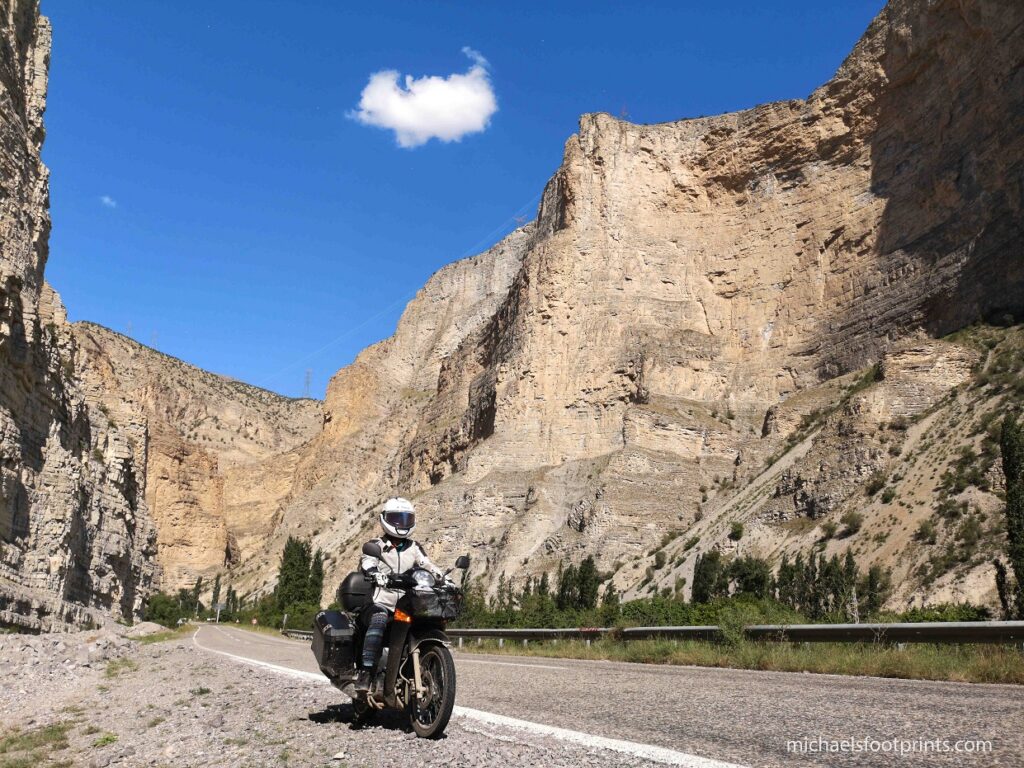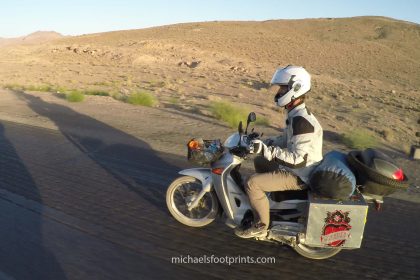This post is part of the series Overland ’18. The aim is to drive a scooter from Iran to Switzerland.
An overview of the articles can be found here.

The Kurdish Areas of Turkey have an unfortunate reputation in our Western media. Travelling through the areas however, is a very rewarding experience. The old city of Mardin and Göbeklitepe – the oldest temple in human history – are just two examples of the rich culture in the area.
We entered Turkey from Georgia through Sarp. Then we made a straight shot to Batman. The places in the South of Turkey are covered in this article. The main reason we decided to make the big detour to drive through the area was the city Mardin, which is an old city built in Syrian style, and Göbeklitepe – the oldest Temple in human history outdating the pyramids of Egypt by thousands of years. The area is rich in history and is politically very interesting, although I will do my best to avoid the latter in this article.

One quick definition to keep my Swiss neutrality
Depending on your political opinion this area is Kurdish Turkey, Turkish Kurdistan or simply North Kurdistan. I will refer to it as Kurdish Turkey, because I consider it the politically correct title.
Disclaimer
Most foreign ministries advise against travel to the Kurdish areas of Turkey. The Kurdish PKK and the Turkish government have a history of violent conflicts.
I will not go into politics. Any opinion you may interpret from this text is not intentional.
From what I could take from some internet research, all the fighting happens between the government and armed groups. Western tourists are not the targets of any aggressions (to the best of my knowledge).
There are many rumours about this are. One of them being the occasional bomb from the Syrian war falling on Turkish villages near the border. When we asked the locals about those rumours, we got a lot of bewildered and confused reactions – Western media at it’s best 🙂
We still monitored the situation in the area before entering Kurdish Turkey and also got in contact with some helpful people on couchsurfing. Plus, the soldiers at the check-points proved very helpful, but more on that later.
That being said, we did leave one city out of our itinerary. Rumor had it that there was an IS nest in Sanliurfa. I never looked into this matter, as we had no particular interest in visiting anyway and we had absolutely no interest in putting this rumor to the test 🙂
So what I’m trying to say is get informed before you go to places like this. And do not ever think you can get through these places without being noticed. Even if you look like a local, not being able to speak Turkish or Kurdish will get you noticed in places where not many foreigners travel.
However, I do want to mention that we met a Norwegian expat who lived in Kurdish Turkey and he said he could not understand why there were travel warnings for the area at all.
During our drive through the rest of the country many Turks said we were crazy for having driven through the area. They considered us lucky for not having been taken hostage or shot – no joke. Turks are deeply afraid of the Kurds living in the same country.
Entering the area
After a long intro finally, the adventure.
Having entered Turkey at the Black Sea coast meant that we could spend a day in a nice moderate climate. We had to leave this agreeable temperature behind us as we slowly made our way south to Kurdish Turkey. Slowly the temperature rose and the landscape became barren again. Back to the desert!

We knew we were getting close to the region when we drove into our first military checkpoint. The road had been blocked by huge cement blocks, so that all traffic was forced to get off the street and to enter a slalom of tall concrete walls. Then, after taking the last turn, we were quite surprised to have a tank pointing its barrel directly at us. The many heavily armed soldiers were understandably quite interested to see us and asked us in a rasher hash and confused manner: “where from?”
As “Switzerland” had never worked before in English in Eastern Turkey I tried my best to say it in Turkish. Then they all loosened up and had a good laugh when taking a closer look at our scooters. One of the young soldiers was from Istanbul and actually spoke English. So I asked him what the situation was like in the area. He reassured me that everything was calm and safe – good news.
Every checkpoint we drove through was like this. Except for the time we were taken of the street onto wet sand and fell over as our scooters completely lost grip on the terrain, which ended with us covered in red mud. There a rather unfriendly soldier asked to see our passports and opened it on the full page visa from Iran (which even has a picture of the owner on it). This let him assume that we were Iranian, which made him very suspicious. The only real problem was that he didn’t understand my explanations and wouldn’t give me my passport back to show him the right page. This went on for a while.

Batman
And this is no joke. This is really the name of the city we spent the night in on our way to Mardin.

Unfortunately, there is not much to do or see besides the street sign. To be very honest most Eastern Turkish cities look exactly the same. Many tall buildings next to each other with the occasional mosque between them. All the things worth seeing are outside of the cities. This is of course my personal opinion. But I dare you to go there and say something different. Although it is worth mentioning that there are some amazing hotels in the region at a very good price and some very tasty Turkish food.
Mardin
The new part of Mardin is also built in a rather monotonous style, but the historical part built on the south side of a big hill is built in a beautiful Syrian style and we spent a whole day walking the streets of this part of Mardin. It has a really special vibe that is difficult to put into words. I really can’t say much about this place even though it’s one of my favorite places I have ever been.

Göbeklitepe
Built in the 10th
century BC Göbeklitepe outdates Stonehenge by 7000 years. While not all of the unearthed
complex may be visited by tourists, an amazing section has been prepared for
visitors.

What makes Göbeklitepe so special for our understanding of human history is that it seems these temples were built while humans were still hunter-gatherer and had not yet began agriculture. While scientists believed that humans first settled down and then built temples for worship, Göbeklitepe seems to prove the opposite. Simply to feed all the workers a stable supply of food would have been necessary. Check the Wikipedia article for more information.

Heads up: When we visited Göbeklitepe there were two places on google maps with this name. The one that you are looking for is at the coordinates 37.223207, 38.922376. Good luck!
The most difficult part of visiting Gobeklitepe is getting there, since we saw no public transport while we drove there on rather small streets. There are signs everywhere, so you will find it, but its quite far off the beaten path. Unfortunately I can not give you any information on local taxi fares or tours.
To sum
up
Generally speaking, driving
through Kurdish Turkey was an amazing experience and certainly worthwhile. And
most importantly it never ever felt unsafe. Not even in the cities out after
dark.












